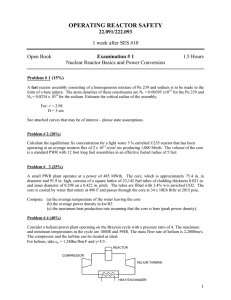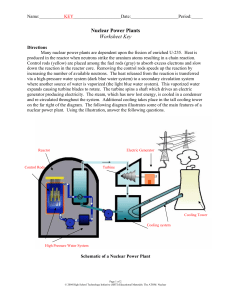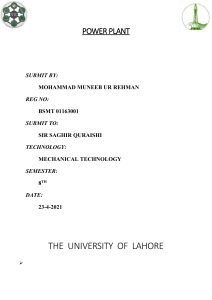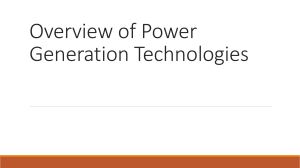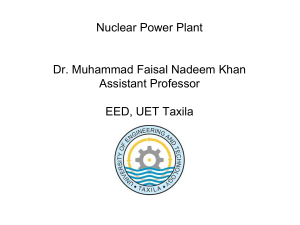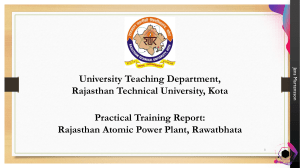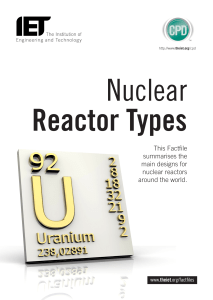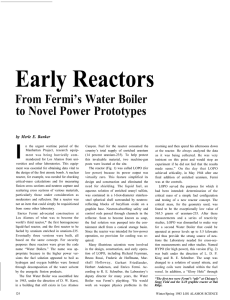Source Energy Equivalents 1 Uranium Fuel Pellet
advertisement
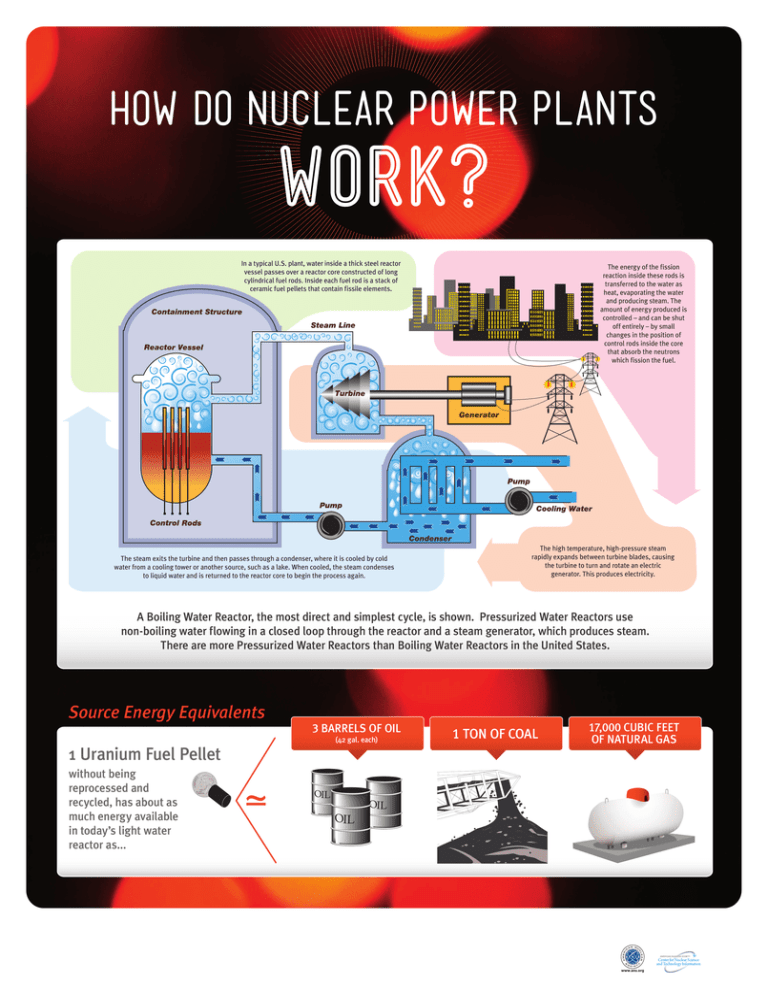
HOW DO NUCLEAR POWER PLANTS WORK? In a typical U.S. plant, water inside a thick steel reactor vessel passes over a reactor core constructed of long cylindrical fuel rods. Inside each fuel rod is a stack of ceramic fuel pellets that contain fissile elements. The steam exits the turbine and then passes through a condenser, where it is cooled by cold water from a cooling tower or another source, such as a lake. When cooled, the steam condenses to liquid water and is returned to the reactor core to begin the process again. The energy of the fission reaction inside these rods is transferred to the water as heat, evaporating the water and producing steam. The amount of energy produced is controlled – and can be shut off entirely – by small changes in the position of control rods inside the core that absorb the neutrons which fission the fuel. The high temperature, high-pressure steam rapidly expands between turbine blades, causing the turbine to turn and rotate an electric generator. This produces electricity. A Boiling Water Reactor, the most direct and simplest cycle, is shown. Pressurized Water Reactors use non-boiling water flowing in a closed loop through the reactor and a steam generator, which produces steam. There are more Pressurized Water Reactors than Boiling Water Reactors in the United States. Source Energy Equivalents 1 Uranium Fuel Pellet without being reprocessed and recycled, has about as much energy available in today’s light water reactor as... 3 BARRELS OF OIL (42 gal. each) 1 TON OF COAL 17,000 CUBIC FEET OF NATURAL GAS



